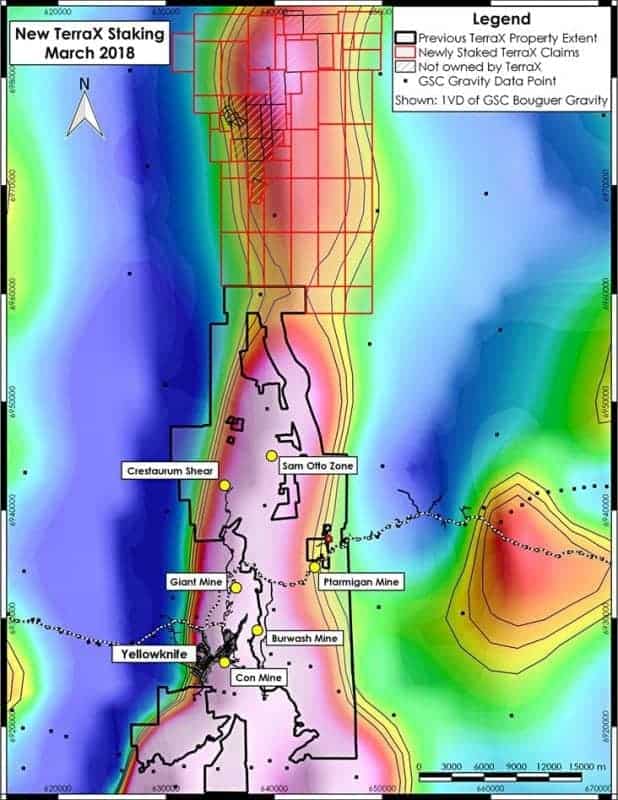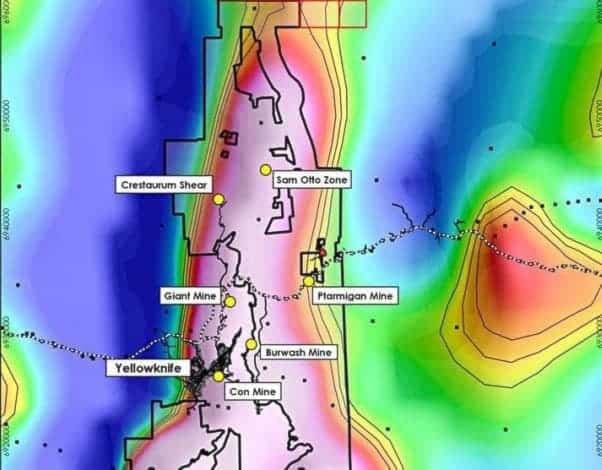Vancouver-based TerraX Minerals has increased its staked claim area by 75 per cent, adding 337 square-kilometres to the North of its current properties.
The land is "unmatched in gold potential by any other junior mining company in Canada," said Joseph Campbell, CEO of TerraX in a news release Wednesday.

Now in its sixth year, TerraX has staked an additional 47 claims, bringing its total acquired lands to 771.6 square kilometres, stated the release.
The Yellowknife City Gold project now covers 70 kilometres of recognized gold deposits with highly "prospective" mineral potential, said David Connelly, strategic and engagement advisor to TerraX Minerals
"Going straight North onwards to the Arctic Ocean, that area called the Slave Geological Province is a world class prospect," he said.
"With today's properly protective environmental and social permitting processes, the shortest time to bring a mine into production is somewhere between 10 to 20 years."
Melissa Bard, mining recorder for the Department of Industry, Tourism and Investment stated in an email to Yellowknifer that no proof of mineral potential is required prior to staking a claim.
"Companies or individuals generally stake a mineral claim in order to have the right to explore an area and further understand the mineral potential," she stated.
A staked claim could be valid for up to 10 years if all requirements for work and exploration are met, said Bard.
"If a mineral claim is staked where the surface is privately owned or leased , then the mineral claim holder must gain the consent of the surface right holder prior to prospecting within their lot (or) parcel of land," said Bard.
Mineral claims only provide the right to explore for minerals, but do not allow land-use activities or hand over surface rights.
Mineral exploration and mining development in the NWT are both subject to an environmental assessment process, provisions of land claims and territorial land use planning.
